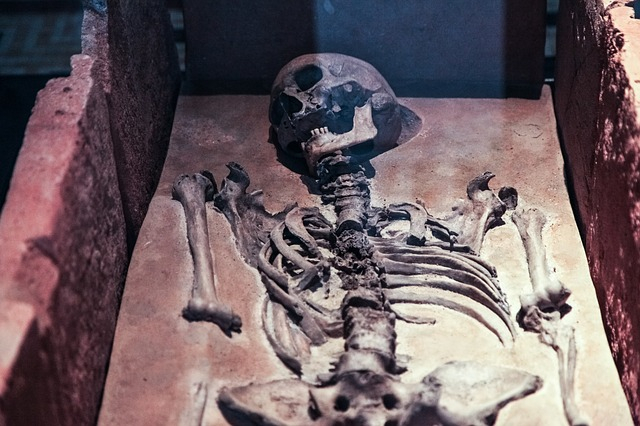Archaeologists had previously studied skeletal remains across Greece, in subterranean vaults, tombs, chapels and archaeological sites. But recently, an anthropologist was left surprised after she was asked to examine bones discovered beneath the stone floor of a Byzantine chapel in the all-male monastic region of Mount Athos.
The American-born anthropologist Laura Wynn-Antikas said that "Bones don't lie. They will tell you how a person lived and perhaps even how they died. You go in prepared to see everything."
Analysis of the bones
As per Wynn-Antikas, those bones included a forearm, shinbone and sacrum which were "different in their morphology." She mentioned that while other bones were more robust and had belonged to the frames of men, "these had measurements that noticeably fell in the range of a female. They were markedly different in size," reported The Guardian.
These bones were found in the subsoil of the chapel where they were buried after being transferred from the original tombs. Further research also revealed that these bones undergo radiocarbon dating. Wynn-Antikas added that if it is about female remains or more than one female remain then many questions will raise related to the woman's life.
Male monastic community in northern Greece
It should be noted, as per the historical evidence, in the 10th-century woman were banned from the peninsula in northern Greece since the establishment of the autonomous monastic community, including female animals, except cats. Almost 2,500 monks living in caves and shacks, while 20 monasteries dotted around the 400-square mile peninsula.
An architect restorer Phaidon Hadjiantoniou, who discovered the remains while conducting conservation at the chapel stated that if a woman is found buried in that area, it will be the first of a female burial on Mount Athos. In addition, he also mentioned that even though there was a time when these monks accepted woman, such cases are very rare.
In a famous tale about a Siberian king, the writer mentioned that when the king brought his wife to Athos, she was not allowed to step on the land. As per Hadjiantoniou, he has never encountered anything like it and this is the first time when he came across the bones which were found under the chapel floor. After the discovery, he called Wynn-Antikas to take look at them.

Human remains
Wynn-Antikas claimed that at least seven individuals were transferred from the original tomb to rebury in this spot. She said archaeologist discovered even jawbones, or mandibles, was present but no skulls. Such burials are not easy "because the bones have been moved from their original burial, so information has been lost," but still it is believed that these people are important enough "to dig up a floor in an important church and place them there. That takes a lot of effort by the living."
However, the reason behind the transfer is still a mystery, while it was quite evident that the skeletons were transferred with extreme care. Later, the bones were transported to Greece's Demokritos research centre in Athens.
Yannis Maniatis, who conducted carbon dating to determine the date of death said, "If we can date the bones to time relevant to events that are both specific and known then DNA testing will become necessary to confirm whether, as seems likely, a woman is among the buried."









